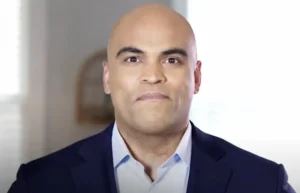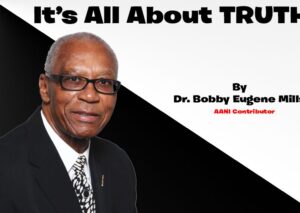By Rebecca S. Jones
“The more land and wealth one owns, the more security one has and the more independent he will be.” – The John Riley Sadberry Philosophy
HOUSTON – From this philosophy, John Riley Sadberry built an empire dating back to over a century ago. For he went from slavery to sharecropping; from sharecropping to establishing the Sadberry Farm on 3,000 acres of land. The Sadberry Farm is an extensive ranch operation which includes cattle, cotton, pecans, fruit orchards, sheep, goats, hay and produce. However, that was only one accomplishment.
While some seek wealth and possession for personal gain, John Riley was equipped with a selfless and benevolent spirit. In all his years of acquiring land, he never forgot his humble beginnings in Christ. To this end, John Riley donated the land for the Wilson Chapel Church, the Wilson Chapel Cemetery (a cemetery which holds marked and unmarked graves of tenants and sharecroppers on the Sadberry farm) and the Mount Peavy School (later known as, the Couch School and later renamed, the Wilson Chapel School).
John Riley Sadberry: From Slave to Philanthropy
John Riley Sadberry was birthed into an era of slavery in McClinton County, Texas. His last name was inherited from his father, who obtained it from a Sadberry slave owner. Though John Riley’s biological father passed prior to his birth, God had already provisioned a devout Baptist Pastor to fulfill the paternal void. As such, John Riley was reared in a religious environment by his mother and stepfather, Cilla and Elder Eaton. It was his Christian upbringing that laid the foundation upon which he built his entire life and family.
Like many Blacks of his day, John Riley had very little education. During his youth, he worked in the fields to help provide for the rest of the family, consisting of one brother and three sisters. He quickly developed a reputation for being “industrious” and “thrifty”. While working for Mr. H.B. Steele, a Brazos County merchant and farmer; John Riley saved nearly every cent he earned. Eventually, he worked himself up from a day-hand to a share-cropper on the Charlie Davis farm in Brazos County; from a share-cropper, he worked himself up to a renter, owning his team and the appropriate equipment needed for farming.
Over time, he found favor in the daughter of Charles and Dolly Smith, a prominent family in Burleson County and land owners in the Teals Prairie Community. He went on to marry Alice Smith and they started a family in Brazos County. At the time, he and his new bride were living on the Charlie Davis farm he worked on.
Not desiring to raise his children on a White plantation; an ambitious and independent John Riley took a leap of faith and purchased thirty acres of land in Burleson County, in the Teals Prairie Community. To the normal eye, the land appeared wooded and undeveloped, however, John Riley saw a greater vision. With his industrious wife working alongside him, they cultivated the land, worked in the fields and raised their ten children for a number of years on those thirty-acres. John Riley went on to buy more land, until he became the owner of over 400 acres in the County.
A respected leader in the community, John Riley was a member of New Hope Baptist Church in Burleson County, where he served on the Trustee Board; he also served on the Trustee Board of the Public School for a number of years. Remaining true to his philosophy, he continued to buy even more land. But, not having the latitude around him, he moved his family from Burleson to Robertson County in 1896. There, he continued on buying and improving land, until he became the owner of more than 3,000 Texas acres. Robertson County became the permanent dwelling place for John Riley and Alice to continue raising and educating their children on up to adulthood.
The Sadberry’s emerged into the epitome of success for Blacks in that era. John Riley mentored scores of young Black men and families in the art of entrepreneurship. People from all walks of life admired his prophetic wisdom and insightful philosophies. A few of his philosophies have been noted as: “A job that is worth doing is a job worth doing right, the hardest thing about any job is getting started; regardless of the crisis you may be in, remember that someone else is in a little worse condition than you are; buying the best is the cheapest in a long run.”
Furthermore he would often say, “The time to pay a debt is when you got the money; not how much money one may make, but what he saves is what counts; not how much money one may make, but how wisely he spends it” and “A lazy person would never get ahead, hard work is honest and should bot be evaded, if one hopes to succeed.”
On August 5, 1926, John Riley departed this walk of life leaving behind his wife and offspring: John Riley, Jr. (Eliza Sheets), Charles (Haley Lawson), Heslip Riley (Lillie Mae Mazy), Nettie (Sushel Lawson, Sr. & Henry Sheets), Minnie (Austin Cashaw & Fletcher Jones), Beulah (Ernest Sheets & William Thomas), Rev. Reuben (Euretta Mazy), Sedalia (Richard Williams), Johnnie (Rev. Otis King) and Lola Mae (Rev. J. F. Sargent) Sadberry. Two years after his passing, Alice Smith Sadberry passed away with her ten children surviving her.
Heslip Riley Sadberry: A Growing Tradition
“Think how best to do the task, feed the stock and they will feed you; try to turn a helping hand, things others do, I can do and do them better; let’s go to glitting while the weather is fitting.” – Heslip Riley Sadberry
Heslip Riley Sadberry assumed the leadership role in connection with the Wilson and Benchley community, after his parents passing. As it was, Heslip married Lillie Mazy in 1911, in Burleson County. At that time, the parents of the bride and groom presented the newlyweds with a team of mules as wedding gifts. With this team of mules as a beginning, Heslip and Lillie, following in the footsteps of their parents, became successful farmers.
According to the Sadberry’s family history, Heslip’s enthusiasm as a farmer led him to till the soil to make it produce above average growths in various fruits, vegetables, nuts, oats and cotton. Inheriting the “gift of gab” from his father, he and his family, frequently travelled the country as he lectured to farmers and civic and political groups. On one occasion, he lectured on the abolition of open stock laws in Robertson County. Fortunately, he was blessed to see passage of this law become a reality.
Heslip and Lillie both made remarkable strides during their lifetime. Heslip was ordained as Deacon at Mr. Tiver Baptist Church, he also served on the Deacon Board at Wilson Chapel and taught Sunday School. Other affiliations in which he was involved included: President of the Negro Robertson County Council, Royal Family Fraternity, Knights of Pythias Lodge, Business Manager and Dorsey Loughridge School Trustee Board (Consolidation of Mt. Tiver and Wilson Chapel Schools). Under his management of his portion of the Sadberry estate, he further granted acres of land to the Wilson Chapel Church and Cemetery.
His wife was equally active and involved in the church and community. Lillie Mae served as Deaconess and chaired the committee to purchase Wilson Chapel’s first communion set, and was Treasurer of the Home Missionary Society, as well as a Sunday School teacher. On July 28, 1933, Heslip was the victim of a fatal accident on Highway 6 near Benchley. Lillie Mae passed on some three decades later.
A Legacy Continued: Carolyn Joyce Sadberry Brown
Today, Heslip’s daughter, Carolyn Joyce Sadberry Brown is carrying the Sadberry torch on. During a recent interview, Carolyn expressed personal sentiments and recollections of the Sadberry legacy.
In the Voice of Carolyn:
My grandfather, John Riley Sadberry, set a high bar in acquiring, developing and preserving the 3000 plus acres over 120 years ago. My father, Heslip Sadberry, continued the legacy of the Sadberry Farm through his management and philanthropic activities, as well as his work as a community activist. I have preserved my grandfather and father’s legacy by keeping mineral rights in the family, spearheading improvements and developments to the land and community, as well as securing a State of Texas Historical Marker in recognition of the land donated by both my grandfather and father for the Wilson Chapel Cemetery, church and school.
As a result of my efforts in preserving our land, The Texas Agricultural Commission awarded the Sadberry Farm the recognition of having over 100 years of owning and operating land in 1999. The award from Land Commissioner Susan Combs, was possible in part because of my husband, Charles Brown, who has established an award-winning Brahman and F-1 cattle and forage operation via the Lazy B-5 Ranch which is situated on Sadberry land.
As for the future, I am proud and confident in the fact that the torch of three generations is in the safekeeping of my progeny — daughters Daphne, Pamela and Candace; Sons-in-law William, Ray (Earlier contributions, now decease) and Artis; and grandchildren Rachel, Caitlin and Artis III.
Personal recollections of Carolyn Sadberry Brown growing up on the Sadberry Farm…
I didn’t know John Riley Sadberry, my grandfather. I only knew what I was told or read about him. My father was Heslip Riley Sadberry, and I enjoyed three years with him in person because he passed away on July 28, 1933 in a fatal car accident coming home from a speaking engagement.
My sister, Thoymmee Dell Sadberry Phillips and I were with him in the car accident when he passed away. My father was there when I came into the world and I was there when God transitioned him from this world. My sister and I were in the jump seat and I only suffered a cut on my arm, the scar remains as to this day. Beyond the three years I shared with my father, I know him from what my mother, sisters and sharecroppers told me.
I fondly remember my oldest sister, Mabel Sadberry Barrows, always telling me that I reminded her so much of our father, always working on some project with his L.C. Smith typewriter; always going to some type of meeting for a speaking engagement to improve the community and always willing to speak out with sharpness without concern about the danger it may bring. My father, like my grandfather, were shrewd businessmen and also generous and community-minded.
My father granted land for the church, school, and cemetery and even sold land to help his sharecroppers make a better life for themselves. My father, passed away at the railroad trestle on Highway 6, minutes away from our farm. Although his life was cut short, he accomplished much with my mother — Lillie Mae Mazy Sadberry, a strong, shrewd woman.
My mother, as a widow, drew from her inner strength, her strong business management skills from her family experiences of owning a cotton gin and commissary and continued to build the Sadberry Farm and the legacy that she and my father began. As a widow, with six daughters and one son, she managed and grew the Sadberry farm for 31 years, including college education for all seven of us. Both of my parents went to college, and my father’s original plan was to buy a house in Prairie View for all of us to live in while we attended college.
My father and mother were so strong and very good with the people that lived on their place — so much so that those families stayed with us for years, unlike many other large farms where tenants and sharecroppers would leave in the middle of the night, abandoning debts and favor. My mother would play the Joe Lewis fights on the radio and invite all the people who lived on the place to listen, sitting in the front yard of our home. She would also have fun playing practical jokes as well. Like my father, she was very organized and continued meticulous record keeping for years — this person on halves; this person on quarters; this person with seeds loaned and this person with food credit.
As a little girl, she put me in charge of ‘watching and counting’ — I remember counting, ‘one bale of hay for us and one for you’ — for people on halves, since we supplied the mules and the tools. For the people who were tenants and lived in one of our houses, I would count one bale of cotton for us, and one bale of cotton for you.
The People on our place and the surrounding Benchley community respectfully and affectionately referred to my mother as ‘The Madam’. My father and mother genuinely loved the people. My mother was also highly respected by the bankers in Bryan, as well as, the owner of the jewelry store— she wore very nice jewelry and always dressed progressively.
Lillie Mae proved the naysayers and jealous people (family and friends), as well as, the male suitors wrong on their prediction that she would go broke within the year. Her business experience started early, springing from her family’s owning both a cotton gin and a commissary.
Because of my mother, Lillie Mazy Sadberry, the Sadberry Farm continued operating until she passed on, educating my five sisters and one brother. I am so proud and thankful for my parents and grandparents.
Daphne, Pamela & Candace: The Next Generation
The Voice of Pamela Brown Taylor:
“African-American women are one of the most under represented demographics in agriculture. I am honored to be a part of a legacy where my grandmother and mother, have inspired and encouraged the next generation of African-American farmers and ranchers. It is imperative that we continue to encourage all women to pursue opportunities to not only acquire but diversify and develop land.”
Musings from Daphne Brown Pradia
When I think of the Sadberry legacy, I am reminded of some of the best times of my life. On the many trips when we left Houston to go to what we fondly call ‘up home’, the first thing that is so meaningful to me is that I literally can breathe easier when we are about half way there— very significant for a child challenged by asthma/allergies. From the moment we turn off of Highway 6 onto Sadberry Road in Benchley, I feel that I am entering a completely different world — almost fairytale like. The serenity and beauty of nature is so peaceful, so life-giving.
I feel intrigued and overwhelmed because we are traveling the road that has been my family’s land since my great-grandparents. All the land from Highway 6 to the Little Brazos — fertile bottom land to sandy soil to compacted clay on what we refer to as ‘The Hill’.
I think about the rows of fences that my grandparents have built, the many crops they raised, and their generosity in selling land to sharecroppers so they could ‘come up’.
I feel as though the atmosphere is filled with the presence of my ancestors — the days so quiet and the nights so very dark with beautiful star light. I remember the many meals my parents, sisters and I shared with aunts, uncles and cousins on every holiday. I remember the firecrackers we set off, the fish we caught, the squirrel and duck hunts, the laying of electric lines and water lines.
I remember learning to drive in open country. I remember the trips to the river, collecting arrowheads, and looking, (with permission) through ‘Big Mama’s vanity’ — seeing her hair ornaments and round red sponges for face powder, smelling her perfume from years gone by as well as seeing her years of tax receipts and meticulous crop records. I remember the Easter Egg hunts, going in the barn, watching people slop hogs and marveling at my grandmother asking of her very fine jewelry to me putting oil on the feathers of a sick chicken.
I remember her letting me collect eggs from the chicken house and never understanding why she said to leave the shiny glass egg. I remember her making eggs, steak and gravy for breakfast, her stainless-steel toaster and her homemade tea cakes hidden in the pantry. Who can forget the breezy afternoons sitting in the rocking chair and swing on the front porch — looking across the land all the way to the river?
I praise God that I have been so very blessed to have had the privilege to enjoy the fun part — the upside of the over a 100 years of my ancestors’ working hard. So, I pause and pay homage to God first, for putting me into a wonderful family. I also pay homage to my great-grandparents, grandparents, and parents for their building an inheritance for us.
The very least I can do to preserve and protect the hard work of my Sadberry ancestors is to do five things: keep the taxes paid, keep the land productive, keep the fence rows clean, keep the mineral rights and keep the land in the family. I vow to do my very best!
Today, the Sadberry legacy continues to thrive with 90 percent of the estate still in the family.
A Quote from Candace Johnson
“A lot of hard work and dedication has been put into preserving and enhancing the land that is our family legacy…. everything from the up keep of the roads, signage placement to keeping the receipts where taxes have been paid. Each generation has done a special work and I am proud that my lovely Mother is passing on the torch to us!”
Photo credit: Mrs. Carolyn Sadberry-Brown







